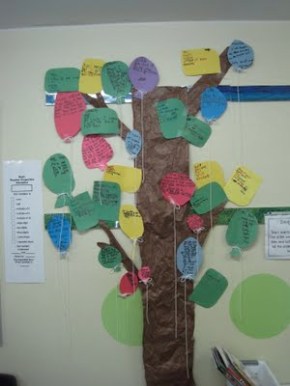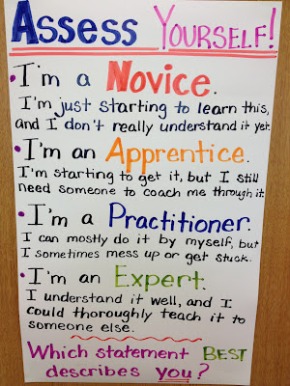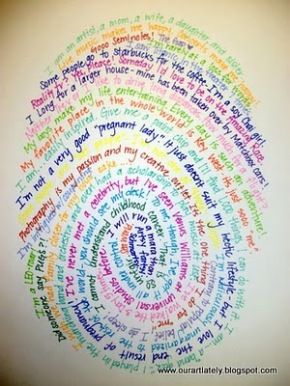One of the most valuable attributes in subbing, was the exposure to all sorts of classrooms, students, organizations, texts, and teaching styles. One of the most unlikely sources came from elementary schools.
Remember elementary school? It seems like a sentimental pure moment in time. Recess, coloring, reading on carpets, and games. Seriously, when was the last time one ever purchased or had to use a glue stick or colored pencils for school? Epochs ago! Ahhh the wonderful time before grades and standardized test scores. When I even envision a elementary classroom, it is just more vibrant and entrancing. I think so many lessons and ideas can be modified and taken from elementary schools for secondary classrooms. For example, instruction is so vividly visual! Posters! Colors! Allegorical Images! Take a look:
This teacher’s “Poet-tree” is a fun and simple play on words that could easily take on multiple alternatives. The poems are balloons or literally impart or impact the tree. Visual and vibrant.
Forget the naive self-ratings and scores. This teacher found relevant and practical terms for students to be honest and reflecting on their work. And a novice is just a more appealing and posh term versus the condescending “beginner or remedial.” Finally, this writing assignment had students create written portraits of themselves.Instead of a likeness, students are to create a textual mirror of themselves dscribing their tastes, traits, and descriptions of themselves. I think it resembles a fingerprint.Isn’t that just a lovely piece of work?
Finally, this writing assignment had students create written portraits of themselves.Instead of a likeness, students are to create a textual mirror of themselves dscribing their tastes, traits, and descriptions of themselves. I think it resembles a fingerprint.Isn’t that just a lovely piece of work?





